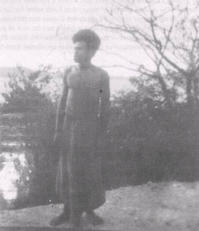


Glimpse of the RAAF Meteorological Service
Preface
Foreword
Introduction
Chapter 1: Growing Up
Chapter 2: Port Moresby Before Pearl Harbour
Sydney to Port Moresby by DH-86
First Impressions of Port Moresby
Meteorological Office Routine
Flight to Kokoda
Tropical Meteorology
John (Doc) Hogan
Setting up House
We Join the RAAF
A Contrast in Attitudes
Some RAAF History
RAAF No 10 Squadron
RAAF No 11 Squadron
The Catalina Story
Construction of the Seven-mile Airstrip and Reclamation Area
Meteorological Service for the RAAF
Unexpected Vistitors
Our State of Readiness
Our Domestic Situation
A Japanese Surprise Packet
What Had We Meteorologists Achieved?
Chapter 3: Port Moresby After Pearl Harbour
Chapter 4: Allied Air Force HQ and RAAF Command, Brisbane
Chapter 5: Japan Surrenders and We Are Demobilised
Epilogue
Acknowledgements
Appendix 1: References
Appendix 2: Milestones
Appendix 3: Papers Published in Tropical Weather Research Bulletins
Appendix 4: Radiosonde Observations 1941–46
Index
Search
Help
Contact us

Setting up House
Doc and his family soon left Port Moresby for Melbourne where he joined the staff of the training school of the Bureau of Meteorology. I moved into the official residence he and his family had occupied. From him I 'inherited' a native servant, Havi (see Figure 5), who cooked, cleaned house, did my washing and cleaned my shoes. He lived in a 'boy-house', a small one-roomed hut immediately behind the house. Havi was a typical Motuan from eastern Papua—small, slight in build and light brown in colour.
Havi received a modest monthly wage (half of which was withheld by the Papua administration pending completion of service) in return for which he was on call 24 hours a day except on Sundays when after the midday meal he was free to promenade through the town with the other natives, an event for which he carefully combed his woolly hair, which he kept bleached, and in which he wore hibiscus or frangipani blooms. Sometimes on Sunday afternoons he would invite his native friends to his boy-house where they would sing to Hawaiian tunes which Havi played on his guitar. On those occasions Havi and his friends often chewed betel nut, a common drug used by the natives, which left a somewhat revolting red stain on their teeth and gums; but I felt that it would be illogical to complain about betel nut when I enjoyed my beer and gin and tonic.
The majority of Port Moresby's white inhabitants had a British Empire colonial outlook dating from the time of Queen Victoria. They saw an enormous gulf between the white and native populations and also observed a rigid distinction between the various occupational classes in the small local white community. The racial prejudice was so strong that it was unacceptable for a Papuan to be seen sharing a car with a white person. Papuans were segregated in churches and in the open-air cinema, having separate accommodation in the rear seats/pews. Papuan house servants were invariable known as 'boys' irrespective of their age.
Before graduating from the Bureau of Meteorology forecasters' training course in September 1940, I was aware that I would receive a commission in the RAAF as a Meteorological Officer. The Bureau of Meteorology was transferred from Department of the Interior to Department of Air on 1 July 1940 but there was a considerable amount of paperwork to be done before the RAAF Meteorological Service could be formally established. Keith Hannay and I were not in uniform at the time of his arrival late in 1940 so he lived with me in the meteorological residence pending Audrey's arrival. She did not finish her nursing training until her 22nd birthday on 1 December 1940 and it was not until the first week of January 1941 that she arrived by the Burns Philp ship MV MacDhui.
People in Bright Sparcs - Hannay, Alexander Keith (Keith)
 |
Bureau of Meteorology |  |
© Online Edition Australian Science and Technology Heritage Centre and Bureau of Meteorology 2001
Published by Australian Science and Technology Heritage Centre, using the Web Academic Resource Publisher
http://www.austehc.unimelb.edu.au/fam/0398.html